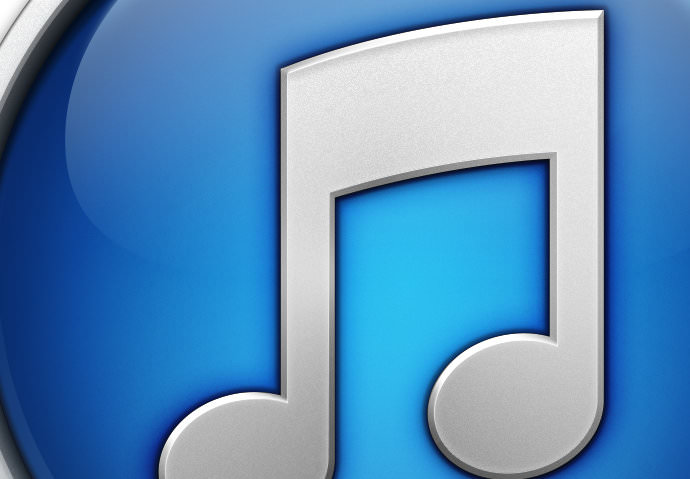This week marks the tenth anniversary of Apple’s iTunes Music Store. Let’s consider how the online music market has changed in that decade.
 When the iTunes Store launched on April 28th, 2003, it had a modest catalogue but, crucially, strong links with the majors. Steve Jobs famously introduced the new service as a way to prevent music consumers from feeling like thieves and iTunes quickly became the easiest and best known way to legally download music. This element of legality, combined with the unbundling of albums into single tracks sold at the sub-$1 sweet spot, led to the exponential sales growth iTunes enjoyed early in its life. The service was rolled out globally over the next few years, beginning with the UK, France and Germany in 2004.
When the iTunes Store launched on April 28th, 2003, it had a modest catalogue but, crucially, strong links with the majors. Steve Jobs famously introduced the new service as a way to prevent music consumers from feeling like thieves and iTunes quickly became the easiest and best known way to legally download music. This element of legality, combined with the unbundling of albums into single tracks sold at the sub-$1 sweet spot, led to the exponential sales growth iTunes enjoyed early in its life. The service was rolled out globally over the next few years, beginning with the UK, France and Germany in 2004.
The tenth birthday has sparked a lot of commentary on iTunes’ contribution to (surprise surprise) the demise of the music industry. Perhaps more interesting is what they achieved and why, and how online music retailers have diversified since.
iTunes sales rose steadily in the service’s first decade, peaked in 2010 (reaching 69% of all US digital sales), and have since been declining. But we all know that to Apple, music sales are not the primary concern. Execs fully admit that its multi-billion dollar music service is “run at break-even”, just one arm of a vast sales and marketing strategy.
What Apple did undeniably achieve with iTunes was the creation of a fully-fledged lock-in between player, store and device. Device rules supreme at Apple. iTunes served the purpose of making iPods easier to use. Freeing the iTunes Music Store for use on Windows fuelled sales of iPods. Through sales of iPods came the development of the iPhone… and so on.
However, iTunes’ simple and usable interface is beginning to look dated and lifeless in comparison to the abundance of colourful, smart and bespoke music aggregators, stores and blogs found online a decade after the iTunes Store launch.
As Beatport’s Matt Adell stated in a gloomy interview
following the Beatport/Shazam partnership deal: “Apple doesn’t give a shit about making money from music, or even music.” How, then, does Beatport compare?
Beatport justifies substantially higher track prices by a commitment to higher quality file formats, more suited to DJs’ needs. It also claims to be the largest body of DJs and dance music lovers in the world. In order to maintain that community, Beatport acts as far more than a store. As Adell says, it’s a “media property” consisting of several business units. Only some consumers buy music, others explore DJ profiles or engage in remix competitions which are subsidised by advertising revenue. It’s through this community that Robert F X Sillerman, having just bought Beatport, plans to tap into “the electronic dance music craze” and build a $1bn empire.
Apple doesn't give a shit about making money from music, or even music.
For Apple, the sheer size of the iTunes platform and audience (435m people) makes it virtually impossible to build similar bespoke or community-led add-ons to its service. The best Apple can hope for is an aggregator which takes advantage of the copious amount of data at its fingertips (akin to the newly released Twitter #Music app), or a streaming radio service à la Pandora. If rumours are to be believed, that’s exactly what’s hatching out of Cupertino next – iRadio
.
While Beatport has managed to maintain audience engagement despite being the the largest online retail house for dance music, smaller stores have also been getting it right.
As part of the annual debates surrounding Record Store Day, XLR8R compared some of the more successful online dance outlets. What becomes glaringly obvious is that, in electronic music at least, the best way to sell music is to build a trusting audience through offering expertise and critical edge, and to emulate as far as possible the old-school record store environment – batting recommendations back and forth across the counter.
Respected boutiques in online electronic music retail, such as Bleep or Juno, will never, nor would they ever hope to, sell to scale. While Sillerman has ambitions to unite audiences in order to cash in on the popularity of ‘EDM’, in the UK a different pattern is emerging. When speaking to XLR8R, Richard Atherton of Juno commented on an increasingly “fractured and diverse set of audiences”, while Dan Minchom described how Bleep simply sells what it considers to be “good music” from a variety of eras, genres and styles.
Would this discerning audience with their eclectic tastes have so easily developed without iTunes’ liberation of individual tracks through the unbundling of albums? Would online music purchasing be so widespread if audiences hadn’t been exposed to the possibility of legal downloading at a cheap price in 2003? Would more personalised and expert smaller stores be so popular had there not been a soulless and sterile megastore to compare them to? Whether you like it or loathe it, iTunes has had a major impact on the way we all purchase music.
